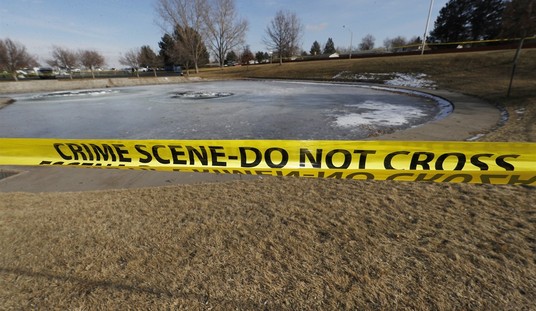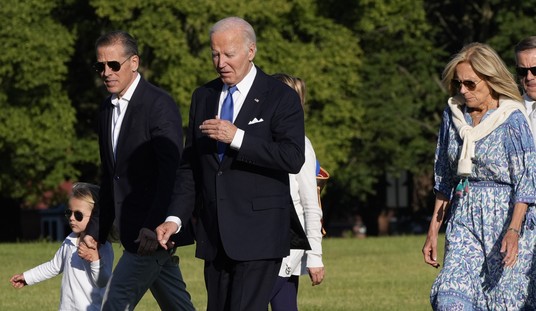In times of national crisis, Americans tend to rally around their president, regardless of party, as a symbol of unity and reassuring hope that a specific ordeal will ultimately pass acceptably, if not painlessly. Think Franklin Roosevelt during World War II and more recently, George W. Bush after 9/11.
When Americans don’t rally around a commander-in-chief – think Lyndon Johnson and Richard Nixon in the Vietnam War – many things tend to go very wrong, in a wave of national strife that leaves indelible scars and far-reaching political ramifications. That’s happening now.
The Afghanistan War in that misbegotten land began in revenge and a determination to oust the ruthless religious zealots who hosted 9/11’s plotters. That initial step succeeded beautifully, as short-term military conflicts tend to do when subjected to the overwhelming, laser-guided power of the U.S. military. (See First Gulf War to liberate Kuwait.)
Where it became a well-meaning but ultimately doomed effort was in the laser-less campaign to build a nation out of a vast feuding patchwork of feudal fiefdoms that have carved up that bloodied land for millennia.
Two presidents thought such an effort possible. The third knew it wasn’t and began the surprisingly complex process of exiting, setting last April as end date. Inexplicably, the fourth U.S. leader, Joe Biden, postponed that date into the peak summer fighting season.
That was the first of an astounding series of disastrous decisions by the 78-year-old Biden, that have and will continue to result in the deaths of thousands. And the ruination for now of global U.S. diplomatic standing, creating tempting opportunities for new mischief by calculating adversaries such as China, which threatens Taiwan, and Russia, which has already annexed part of Ukraine and gave up its Afghan adventure after only 10 years.
The conclusion of the United States’ longest war, a 20-year ordeal that reveals both the nation’s unique generosity and goodwill, and its stubborn officials’ enduring ignorance of history, should have been a time of at least relief and appreciation for the countless sacrifices endured by more than 800,000 U.S. service personnel, millions of their family members and contractors.
Plus, of course, thousands of NATO allies, who for the first time in the alliance’s 72-year history, loyally joined the mutual defense of an attacked member.
There is no joy in losing yet another war, especially in a primitive land the size of 100 Delawares. Then, there is the challenge of extricating thousands of our service members and their trusty local helpers which was always destined to be a precarious and messy affair, even before widespread Taliban advances.
But the lethal incompetence and stupidity of a cognitively-impaired commander-in-chief has made the situation far worse and more dangerous than necessary for anyone involved. And for those watching in horror from home.
Anyone involved in the past two decades’ of this conflict — American or Afghan — will spend a life with those scars. It’ll be up to midterm voters to decide if that still matters politically in 62 weeks.
Meanwhile, the list of Biden Botches lengthens by the day. As do his lies. Which are so numerous that DC media seem simply incapable of compiling them, as they did so conscientiously for Biden’s predecessor.
In early July, a Biden focused solely on the troops painted a rosy picture of the military draw-down proceeding “in a secure and orderly way” for the official Aug. 31 exit. After one night, then with no ceremony, announcement or even government notification, Afghans awakened to find the United States had completely abandoned Bagram Air Base. As if sneaking away in the night.
To Biden, this was keeping a promise to Americans early. However, to thousands of Afghan troops, diligently trained by Americans and contractors, this was clear evidence of abandonment. Their morale and fighting-will evaporated as quickly as U.S. air support.
Forces of the Taliban (the word means “students” in Pashto), likely used bribes that are endemic there to drive rapid advances through the 34 provinces. And the collapse predictably spread as it did in Vietnam 46 years ago.
In July Biden observed: “I trust the capacity of the Afghan military, who is better trained, better equipped, and more re- — more competent in terms of conducting war” and “the likelihood there’s going to be the Taliban overrunning everything and owning the whole country is highly unlikely.”
Biden now claims he had no warnings of a cave-in. However, unidentified intelligence sources, who are quite savvy in protecting that community’s reputation, quickly leaked contradictory evidence, confirmed by a no-longer confidential State Dept. cable warning of imminent collapse.
Indeed, collapse and panic spread in Afghanistan like a Delta variant, with thousands seeking to flee, including up to 15,000 American civilians in-country and perhaps 50,000 or more Afghans who’d worked for the U.S. and faced certain reprisal. Chaos ensued as the Taliban occupied Kabul and all but one province.

Inexplicably, the president was silent for days, refusing to take calls from foreign leaders, later claiming he’d received praise. Canada’s Prime Minister Justin Trudeau said he was unable to reach Biden, so consulted instead with Hillary Clinton for some reason.
Perhaps someday we’ll learn the U.S. leader was under medical treatment, but Biden appeared to blithely continue his summer vacation in Delaware, while scenes of panicked crowds filled the nation’s TV screens with mobs attempting to board departing planes, some of whom fell to their death after takeoff.
Social media was overloaded with speculations on Biden’s health. (Vice President Kamala Harris was shipped off to visit Singapore and, oh, look, that same Vietnam.)
Biden constantly claimed Americans support his withdrawal decision. But that’s not the point. The point is how colossally screwed up the implementation was. Indeed, Biden’s average job approval dropped two points last week to match Trump’s.
Having previously described the withdrawal as orderly, Biden suddenly said chaos was to be expected. “The idea,” he told ABC News, “that somehow, there’s a way to have gotten out without chaos ensuing—I don’t know how that happens.”
Asked about desperate Afghans falling to their death, the nation’s chief executive bizarrely dismissed that as having happened four or five days previously, as if time made them less ghastly.
While British and French troops moved around Kabul collecting their citizens unable to reach the airport, Biden’s woke Defense Secretary, Lloyd Austin, helplessly claimed that the strongest national fighting force in the world lacked the resources to help any Americans beyond Bagram, let alone Afghan colleagues elsewhere.
Then came word that apparently, in the rush, the U.S. had left behind an estimated $85 billion in basic and sophisticated military gear, making the Taliban overnight one of the world’s better-equipped fighting forces. Taliban media delightedly showed photos of their fighters in new bulletproof U.S. gear, funded by American taxpayers.
Worse, the gear also includes drones and other advanced equipment that China and others would be interested in reverse-engineering to copy and counter.
In the times he has appeared in public the allegedly empathetic Biden is far from the national leader exuding confidence and a sense that we are all in this together. Instead, he’s prickly and defensive, even disconnected from the graphic, emotional mess Americans are witnessing.
Last week, at the height of evacuation concerns, he held a press briefing on Covid, which he’d rather talk about, taking no questions because he knew they would be on Afghanistan. And who thinks this president would have coherent answers?
In one interview Biden was asked about potential foreign adversaries taking advantage of the withdrawal mess. Here was the president’s full reply:
Look, George, the idea that w– there’s a fundamental difference between– between Taiwan, South Korea, NATO. We are in a situation where they are in– entities we’ve made agreements with based on not a civil war they’re having on that island or in South Korea, but on an agreement where they have a unity government that, in fact, is trying to keep bad guys from doin’ bad things to them.
Got that?
Asked at one point about comparisons between the chaotic evacuation of Saigon in 1975 and Kabul, Biden dismissed any similarity. “There’s going to be no circumstance where you see people being lifted off the roof of an embassy in the — of the United States from Afghanistan. It is not at all comparable.”
Six weeks later, exactly that was happening.
A contributing factor in both defeats, however, was lack of end-stage planning. In both cases, officials knew that word of evacuation planning would inevitably get out and prompt panic. Of course, in the end the lack of planning prompts panic anyway. The difference is Americans are left stranded and thousands of local allies get left behind to their fate at the hands of ruthless victors.
In 1975, U.S. troops were long since gone. This summer, U.S. troops were just gone. So, some 6,000 had to be flown back in to oversee the evacuations. Asked Trump in a news release, “Can anyone imagine taking out our military before evacuating civilians?”
Raising the inevitable painful question about future foreign forays: Who in their right mind anywhere, given these deadly spectacles, would risk cooperating with any intervening U.S. force?
You may remember during the 2015-16 presidential campaigns former president Barack Obama seemed slow to support his own vice-presidential partner. There were, however, numerous unidentified Democrats who told Politico, for instance, that Obama had warned them, “Don’t underestimate Joe’s ability to f–k things up.”
If only enough voters had balanced that with their blinding visceral dislike of Trump.














